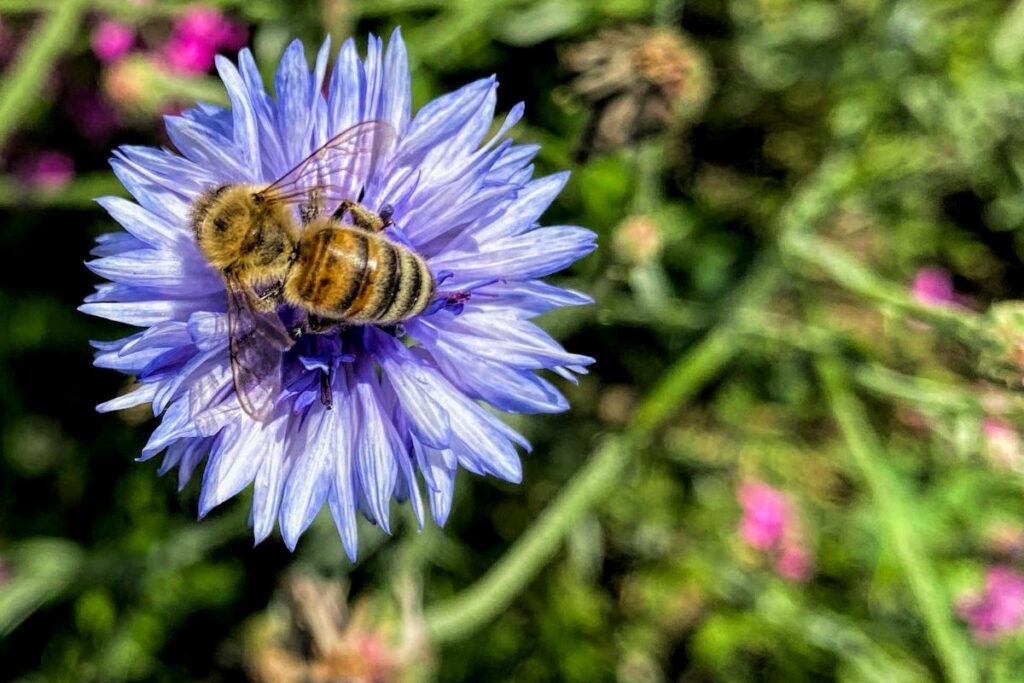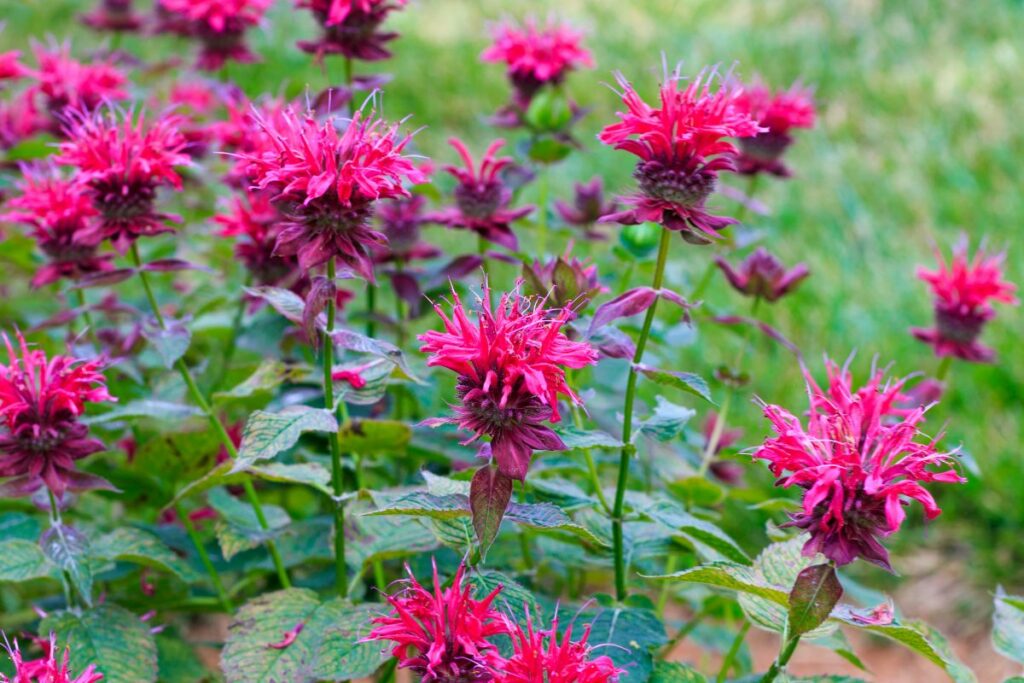Looking to boost your garden’s beauty and health?
Grow bee balm!
This fantastic plant offers numerous benefits for your backyard.
Curious about why you should plant it?
Let’s find out together!
The Allure of Bee Balm
Bee Balm, commonly recognized for its role in mint family gardens, provides a spectacle with its rich-hued flowers ranging from reds to purples. Each bloom adopts a tubular form, gathering in dense clusters that not only charm onlookers but also serve as a magnet for beneficial wildlife. Embrace the sight, as these blossoms create a truly inviting outdoor presence.
Sanctuary for Pollinators
Bee Balm invites an assortment of essential pollinators with its sweet-scented blooms. Your garden may witness an increase in:
- Bees
- Butterflies
- Hummingbirds
Each visitor, while sipping nectar, plays a role in spreading pollen among flowers, a vital step for fruit and vegetable growth. This plant thus becomes an invaluable ally for both your garden’s health and the ecosystem’s diversity.
Enhancing Ecological Variety
- Plant Bee-Friendly Flora: Cultivating plants like bee balm actively enriches local biodiversity.
- Attract Pollinators: Flowers attract pollinators, inadvertently aiding the propagation of surrounding flora.
- Boost Plant Populations: A diverse plant community flourishes, supporting a broader wildlife network.
- Encourage Ecosystem Health: Robust ecosystems underpin nature’s equilibrium and the prosperity of species, from insects to avians.
Effortless Garden Champion
- Sunlight: Thrives in both full sun and partial shade.
- Soil: Adapts to various soils; optimal in well-drained conditions.
- Watering: Sparse; once rooted, it requires little hydration.
- Ideal Choice: Suited for gardeners valuing ease and aesthetic appeal.
Cooking and Health Applications
- Herbal Tea: Brew leaves for a tea with hints of citrus and mint.
- Digestion: May ease digestive discomfort.
- Relaxation: Can help reduce stress levels.
Step-by-Step Bee Balm Cultivation Guide
1. Choosing an Ideal Spot:
Look for an area in your garden that is blessed with 4 to 6 hours of direct sunlight daily. Sufficient light is essential for your bee balm to flourish, producing abundant blooms. Keep in mind that surrounding vegetation should not cast too much shade on the spot you pick, as this can lead to weak growth and sparse flowering.
2. Soil Preparation:
Your bee balm will prosper in soil that allows for good drainage and is enriched with organic materials. Should the soil in your garden be dense or prone to clumping, like clay soils often are, mix in some compost or decayed manure to enhance its structure and drainage capacity. Once your plants are in the ground, a layer of mulch can be applied to keep moisture in the soil and to keep weeds at bay.
3. Selecting a Bee Balm Variety:
Various bee balm variants exist, each with its distinct shade and growth habits. Consider the ones that most appeal to you visually and are well-suited to your garden’s conditions. Some sought-after choices are the fiery-hued Monarda didyma, the lavender-tinted Monarda fistulosa, and the lemon-scented Monarda citriodora.
4. Planting Your Bee Balm:
From Seeds: Begin sowing seeds indoors about 6 to 8 weeks prior to the expected final frost date. Press the seeds into the surface of a seed-starting soil mix and ensure they remain moist. Seedlings ready for the outdoors should have several leaves and be transplanted once frost is no longer a threat.
As Transplants: Alternatively, acquire young plants from a nursery and transplant these after the last frost, spacing them about 18 to 24 inches apart, or as recommended for the bee balm variety you’ve selected.
5. Care and Watering
Initial Stage: Water your bee balm plants diligently in the beginning to establish strong roots, keeping the soil moist without letting it become soggy. Morning watering is advantageous as it allows any excess to evaporate throughout the day, lowering disease risks.
For Established Plants: After settling in, the plants are quite undemanding. Only water them in dry spells, taking care to avoid overwatering as this can cause root issues.
6. Regular Pruning and Deadheading:
Remove wilted flowers frequently to encourage new blooms and keep the plants looking tidy. By doing so, you redirect the plant’s energy from seeding to growing fresh flowers and foliage. Cut back the plant stems to just a few inches from the soil in the late fall or early spring to stimulate vigorous growth.
7. Division of Bee Balm:
Every three to four years, it’s a good idea to divide the bee balm to ensure they don’t get too crowded and lose vitality. Split the clumps into smaller portions, each with a decent amount of roots, and replant them at the same depth they were originally at.
8. Observing the Garden Life:
Take a moment to witness the variety of pollinators your bee balm attracts. Bees, butterflies, and hummingbirds will frequent your garden, playing their vital part in the pollination process. Observing this cycle is both delightful and insightful, giving you a close-up look at nature’s interdependence.



